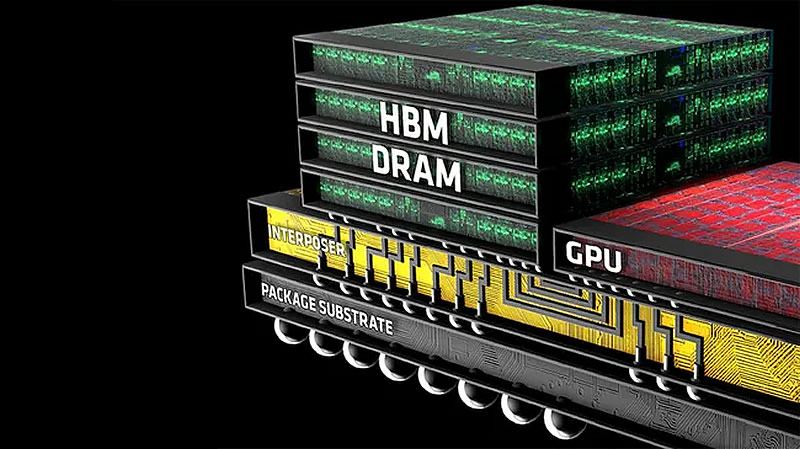JEDEC has published a preliminary specification for fourth-generation HBM4 memory, which promises significant increases in capacity and throughput for artificial intelligence and high-performance computing systems.

Image Source: AMD
The new HBM4 standard will support 24 GB and 32 GB stacks, and will also offer configurations for 4-, 8-, 12-, and 16-layer stacks with vertical TSV interconnects. The JEDEC Committee has tentatively agreed on speeds of up to 6.4 Gt/s, but discussions are ongoing about the possibility of achieving even higher data rates.
A 16-layer stack based on 32-gigabit chips will be able to provide a capacity of 64 GB, that is, in this case, a processor with four memory modules will be able to support 256 GB of memory with a peak bandwidth of 6.56 TB / s using an 8192-bit interface.
Although HBM4 will have double the number of channels per stack compared to HBM3 and a larger physical size to ensure compatibility, a single controller will be able to handle both HBM3 and HBM4. However, different substrates will be required to accommodate different form factors. Interestingly, JEDEC did not mention the possibility of integrating HBM4 memory directly into processors, which is perhaps the most intriguing aspect of the new memory type.
Previously, SK hynix and TSMC announced collaboration on the development of HBM4 base crystals, and a little later at the European Symposium 2024, TSMC confirmed that it will use its 12FFC+ (12nm class) and N5 (5nm class) processes to produce these crystals.
TSMC’s N5 process allows for the integration of more logic and functions, with interconnect pitches ranging from 9 to 6 microns, which is critical for on-chip integration. The 12FFC+ process, based on TSMC’s 16nm FinFET technology, will produce cost-effective base dies that connect memory to host processors using silicon wafers.
Note that HBM4 is primarily designed for the needs of generative artificial intelligence and high-performance computing, which require processing very large amounts of data and performing complex calculations. Therefore, it is unlikely that we will see HBM4 in client applications such as GPU. SK hynix expects to launch production of HBM4 in 2026.